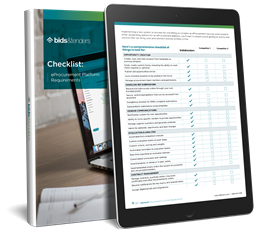The pitfalls of email bid submissions
Reproduced here with the permission of the Ottawa Construction Association
Owners beware: receiving bid submissions over email may sound like an easy way to work around the challenges presented by the COVID pandemic, but experts advise the practice could open the door to all kinds of risky outcomes.
The COVID-19 pandemic has changed the world in ways no one predicted.
Take construction bidding. At the insistence of industry and with the support of funding from senior levels of government, municipalities are working hard to fill their pipelines of construction tenders, and keep the taps flowing. But the pandemic is causing a multitude of unanticipated disruptions.
Two among these are that municipal staff—save for a few front-line personnel—aren’t in their offices nearly as much these days. Which means they’re not able to receive tender submissions on closing day the way they used to. The second problem they face is that most people don’t want to handle hard goods (i.e., documents) for fear of the risk that those papers may have come into contact with a COVID carrier.
Under these criteria, a new—and largely undesirable—trend is emerging in construction procurement: email bid submission.
“That’s a no-go for us,” says OCA president John DeVries. “Email bid submission may seem like an obvious and simple work-around, but it’s filled with risk.”
In fact, there are a number of risks associated with the practice. They fall into two categories: mechanical and ethical, says Kurt Rohmann, director of sales & marketing with eSolutionsGroup, which produces the bids&tenders electronic procurement platform.
“Mechanical risks are things like a recipient’s email server rejecting a bidder’s email submission because a file size is too large, or the sender’s domain is blocked by a firewall, or the sender’s email ends up in a spam folder,” he says. “They’re the technical risks that come from delivering anything important over email on a deadline.”
The situation can also occur where a bid submission takes five minutes to upload to the sender’s server and five more minutes to download from the recipient’s server, during which time the bid submission time has passed.
“All of these create all kinds of risk to the bid process, and could open the door for a purchaser to end up in litigation against a bidder,” he adds. “Imagine a compliant, low bid was delivered before deadline, but was caught in the purchaser’s spam folder, and never opened before the organization awarded a project to another, higher-priced company.”
On the other side of the coin are potential ethical violations that come from receiving bids over email. Imagine the case where a bid comes in early over email, the price envelope is opened, and that bid price is revealed to a competitor.
The solution to both problems, say both DeVries and Rohmann, is to move toward e-procurement technology. Through platforms such as bids&tenders, buyers and vendors connect, submit and receive bids securely, and observe all the legal requirements and industry best practices for transparency and compliance.
“Electronic procurement systems remove all the mechanical and ethical problems associated with email bid submissions,” says DeVries. “Since all the bids are submitted over a secure platform and are stored in a digital lock box until closing time, there’s no risk of a purchaser not receiving a file, or opening a bid ahead of time.”
There are other advantages.
Digital procurement platforms can be configured to run full quality-control checks to ensure bidders don’t miss mandatory requirements. The system will simply not allow a bid to be submitted without those essential elements. Most will also perform all mathematical calculations for bidders—so there’s no room for clerical errors. The systems can also help purchasers evaluate bids quickly and easily.
“There’s a huge time-savings to using eProcurement platforms like bids&tenders,” says Rohmann. “Our purchaser partners tell us they save about 35 percent of the time they used to spend on tender analysis. Plus, their build costs tend to be lower as they’re able to collect tenders from a wider geographic region than if they required bidders to come to their facilities to drop off hard-copy documents.”
Digital procurement platforms are, by and large, easy to use. Those designed with construction purchasing in mind come in both off-the-shelf models and versions that can be fully customized. For those organizations simply looking to get started on the technology, staff can be onboarded in days. For those looking to take deeper dives into the system and its potential, a longer training period may be needed.
“The great thing about bids&tenders,” says Rohmann, “is that our platform doesn’t ask purchasers to change their forms or their structures. It makes use of their forms, but does so in a way that’s easier to use.”
Already, bids&tenders counts more than 300 purchasers across the country, many of whom are located in Ontario, as well as tens of thousands of vendors. It, and digital procurement tools like it, are the way forward in the changing world of construction procurement that has been forced on us all by the COVID-19 pandemic.
This article was reproduced from the September 2020 issue of the Ottawa Construction Association magazine, "Construction Comment."
FREE DOWNLOAD
Checklist: eProcurement Platform Requirements
eBidding is only one benefit of an eProcurement platform. We've developed a comprehensive checklist of eProcurement platform requirements to help you research different options available, based on common legislative and organizational requirements. Download the checklist now.

